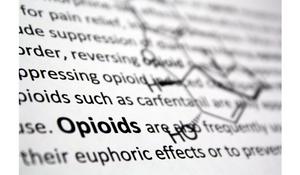 Nearly 500,000 people died from opioid overdoses from 1999-2019. This epidemic of opioid overdose deaths can be outlined in three distinct waves.
Nearly 500,000 people died from opioid overdoses from 1999-2019. This epidemic of opioid overdose deaths can be outlined in three distinct waves.
- The first wave began with increased prescribing of opioids in the 1990s, with overdose deaths involving prescription opioids (natural and semi-synthetic opioids and methadone) increasing since at least 1999.
- The second wave began in 2010, with rapid increases in overdose deaths involving heroin.
- The third wave began in 2013, with significant increases in overdose deaths involving synthetic opioids, particularly those involving illicitly manufactured fentanyl. More than 14,000 deaths involving illicitly manufactured synthetics occurred in 2019, which is equivalent to about 38 deaths per day.
The OUD Pandemic
Since the COVID-19 pandemic started, the opioid-use crisis has gotten worse. Provisional data posted by the U.S. Centers for Disease Control and Prevention showed that during a 12-month period from May 2020 to April 2021, over 100, 000 people died of drug overdoses in the U.S. While drug overdoses may have various causes, over 75,000 overdose deaths were due specifically to opioid use, with 64,000 deaths due to synthetic opioids such as fentanyl.
Social Worker’s Key Contribution-Nov-23-2021-03-17-15-87-PM.png?width=300&name=Untitled%20design%20(1)-Nov-23-2021-03-17-15-87-PM.png)
Given the multi-faceted nature of the opioid crisis, an “all hands-on deck” approach is essential to eradicate this devastating epidemic.
- Meeting the full needs of individuals suffering from addiction is vital. This includes prevention, diagnosis, access to care, medication management, treatment, therapy, and support services that are culturally relevant to the individual. Social workers are the key figures in coordinating the full range of medical and non-medical services needed to beat this pernicious addiction.
- While not directly providing substance and mental health treatment, social workers ensure that individuals, families, and communities are linked with these services, and furthermore, address critical gaps in the continuum of care. This is necessary to ensure adequate recovery and minimize relapse among individuals with opioid use disorder (OUD), as well as other substance use and coexisting disorders.
- Social determinants of health are important variables in understanding best practices for combatting the opioid epidemic. Social workers are prepared to address social factors that impact treatment and recovery, such as housing, education, and job security. These needs are often missed in settings that do not involve social work.
- Another way that social workers can intervene is by facilitating access to naloxone (Narcan®), a medication that can reverse the complications of an opioid overdose. Social workers can promote uptake by educating patients about naloxone, directly providing this medication to patients in the clinic, and gaining training in administering naloxone. They can also partner with community stakeholders (first responders, correctional settings, and homeless shelters) looking to administer and supply this medication.
- Social workers can help reduce the harms associated with injection drug use (i.e., infectious disease transmission) by building partnerships with local Syringe Exchange Programs.
- Social workers can help improve access to MAT (methadone) by using the SAMHSA Behavioral Health Treatment Locator Tool. The Tool is free to the public and offers accurate information for opioid specialty clinics, which are accessible for many people living in urban areas.
- Beyond helping to connect patients to local MAT options, social workers in non-specialty settings (e.g., community mental health, primary care) can advocate for practitioners to obtain buprenorphine waivers (SAMHSA, 2019). Due to the requirement for psychosocial treatment once a patient receives buprenorphine treatment, social workers delivering these supports can help increase the feasibility that practitioners in their setting take on patients.
- While the medication component of MAT is imperative for OUD treatment, studies have shown that patients receiving MAT have an even better chance at recovery when provided with concurrent psychosocial services. Service delivery options that offer the most promise for patient outcomes include integrating comprehensive case management strategies from the Center for Substance Abuse Treatment (Treatment Improvement Protocol 27, 2000), and gaining training in delivery of evidence-based psychosocial treatments for co-occurring mental health disorders like depression, anxiety, and PTSD.
- Social workers can also connect with prevention and treatment options that typically occur in the community or non-specialty settings. Options such as peer recovery specialists and patient navigators offer a promising approach that can engage people with OUD in recovery efforts.
- Finally, it is essential for social workers to push back against unethical and pseudo-scientific perspectives on OUD and treatment. A few examples of these narratives include “medication-assisted treatment replaces one addiction for another”; “people with addiction cannot be trusted”; and “people with addiction will never change.” Not only are these narratives in violation of the National Association of Social Workers Code of Ethics (2008), but they diverge from the scientific literature.

